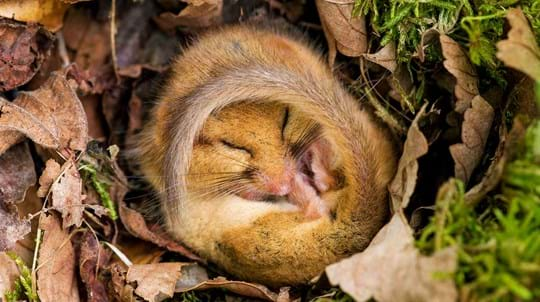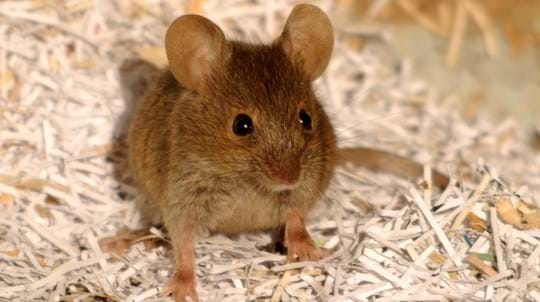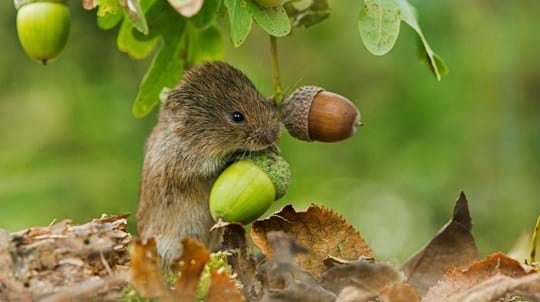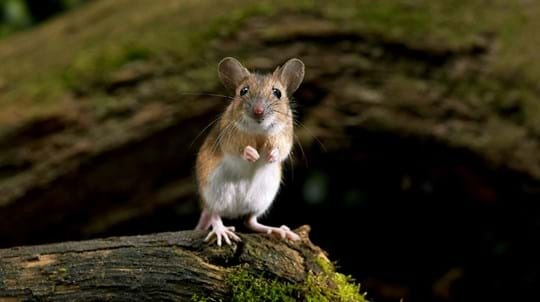
Credit: Wildlife Photography / Alamy Stock Photo
What do wood mice eat?
Wood mice are omnivores. They eat seeds, fruit and nuts in autumn when they are in abundance, but also catch invertebrates such as earthworms, caterpillars and centipedes.
Despite being one of our most common woodland mammals, the small, sweet and secretive wood mouse is hard to spot. They feast on nuts, seeds and invertebrates and are an important food source for larger mammals and birds of prey.
Common name(s): wood mouse, field mouse, long-tailed field mouse, European wood mouse
Scientific name: Apodemus sylvaticus
Family: Muridae
Habitat: broadleaf and mixed woodland, grassland, farmland, hedgerows
Diet: seeds, fruit, nuts and insects
Predators: larger mammals, such as foxes and badgers, and raptors
Origin: native
Wood mice (also known as field mice) have brown fur with pale underparts, large black eyes, big ears and a long, hairless tail. Their bodies are around 10cm long.
Not to be confused with: house mice which are a greyer-brown and unlikely to be seen outside of buildings. Bank voles have noticeably smaller eyes and ears, as well as a shorter, hairy tail.

Credit: Wildlife Photography / Alamy Stock Photo
Wood mice are omnivores. They eat seeds, fruit and nuts in autumn when they are in abundance, but also catch invertebrates such as earthworms, caterpillars and centipedes.
They don’t hibernate but can go into torpor during particularly cold winters
The breeding season is between February and October. Females produce litters of four to eight young up to six times in one year. The young stay with their mothers for around twenty days and reach sexual maturity after two months.
Wood mice are short-lived animals, with few individuals surviving longer than one year. They are an important food source for many predators, including weasels, stoats, foxes, owls and kestrels.

Credit: (Photo: Colin Varndell / Alamy Stock Photo)
As the name suggests, wood mice live in woodland, but they will occupy a wide variety of habitats including farmland, parks and gardens. They occasionally venture into buildings.

Woodland wildlife is fading before our eyes. Please support our appeal to save rare and threatened species.
Donate nowWood mice can shed the skin on their tail in a bid to escape predators
Wood mice rarely live longer than 12 months.
Wood mice are primarily nocturnal and prefer to stick to dense cover, making them hard to see. For the best chance of seeing a wood mouse, be as quiet as possible and watch sources of possible food, such as fruit and nuts.

Trees woods and wildlife
Sleepy, charming, undeniably cute. Find out where hazel dormice live, what they eat and how they breed.

Blog
Helen Keating • 28 Mar 2022

Trees woods and wildlife
Cute and in huge numbers, but rarely seen. The grass-tunnelling field vole is our most abundant mammal. Find out how they breed, what they eat and where to spot them.

Trees woods and wildlife
Agile, alert and rarely seen. The yellow-necked mouse is only found in the mature and ancient woodlands of southern Britain.Learn about what they eat, how they breed and lots more.